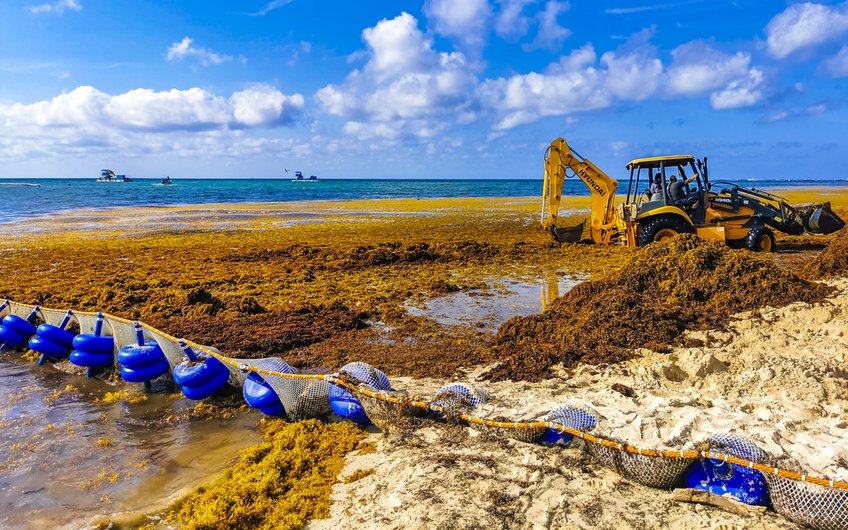A significant scientific breakthrough has identified the key drivers behind the alarming increase of Sargassum blooms in the Atlantic Ocean. According to researchers at the Max Planck Institute for Chemistry, a combination of phosphorus-rich upwelling and nitrogen-fixing cyanobacteria are fueling the unprecedented growth of this brown algae, which has led to substantial environmental and economic challenges, particularly for coastal areas like Playa del Carmen in Mexico.
By early June 2023, approximately 38 million tons of Sargassum were reported drifting toward the Caribbean islands, the Gulf of Mexico, and northern South America, marking a record high. This seasonal influx creates serious issues for tourism and local ecosystems, as the decomposing algae emit unpleasant odors and disrupt beach access. Efforts to clear the seaweed using machinery have become essential to maintain safe and enjoyable beach conditions.
The research team utilized coral drill cores to unravel the mechanisms leading to these algal blooms. Their findings, published in the journal Nature Geoscience, indicate that strong wind-driven upwelling near the equator plays a critical role in transporting phosphorus to the ocean’s surface. This nutrient enrichment benefits cyanobacteria that grow symbiotically on Sargassum, allowing them to capture atmospheric nitrogen and convert it into a usable form for the algae.
The Sargassum originates from the Sargasso Sea, located east of Florida, but has been increasingly observed in the so-called Great Atlantic Sargassum Belt since 2011. This massive carpet of algae drifts toward the Caribbean, influenced by prevailing easterly winds. Previously, scientists speculated that nutrient runoff from agricultural practices and deforestation contributed to the algae’s rapid growth. However, new evidence suggests that these factors alone cannot account for the dramatic increases in Sargassum biomass.
By examining the nitrogen isotopic composition of coral samples collected from diverse Caribbean locations, the researchers linked periods of elevated nitrogen fixation to years with record Sargassum blooms, specifically in 2015 and 2018. PhD student Jonathan Jung, the study’s lead author, stated, “We noticed two significant increases in nitrogen fixation during these years. Our comparison of coral records with annual Sargassum biomass data showed a perfect alignment, confirming a causal link.”
The study further revealed that the upwelling of nutrient-rich deep water is exacerbated by temperature differences between the tropical North Atlantic and the southern Atlantic. These variations in sea surface temperatures create wind anomalies that facilitate the upward movement of phosphorus, which, in conjunction with nitrogen fixation by cyanobacteria, drives the growth of Sargassum.
Geochemist Alfredo Martínez-García, the senior author of the study, emphasized the implications of these findings. He noted, “Our mechanism explains the variability of Sargassum growth better than any previous approaches. However, we still need to explore other potential factors influencing this phenomenon.” The research team aims to enhance predictive models for future Sargassum stranding events by continuously monitoring winds, sea temperatures, and upwelling changes in the equatorial Atlantic.
The ongoing research will not only deepen the understanding of Sargassum dynamics but also inform strategies to mitigate the impacts of these blooms on Caribbean ecosystems and coastal communities. As global climate change continues to shape oceanic conditions, the future of Sargassum in the tropical Atlantic remains a crucial area of study for scientists and policymakers alike.



































































